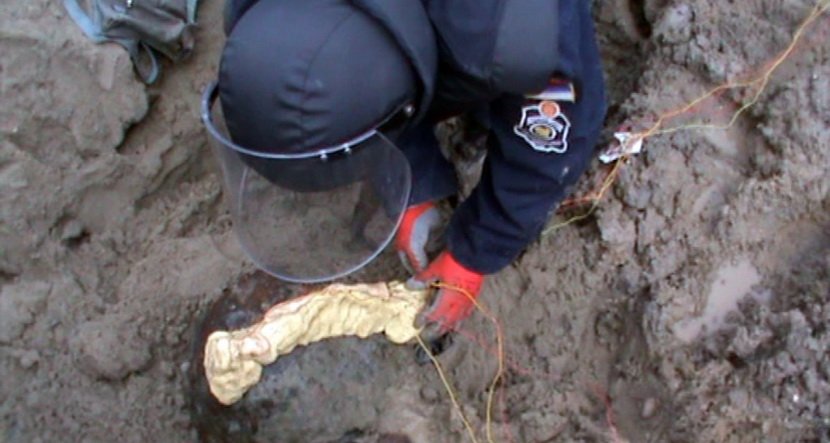There's unexploded ordnance in 15 locations in Belgrade, shells and aerial bombs: Some never get removed

Last week, an explosive device was discovered in Belgrade by accident, at a construction site in the Zvezdara municipality. Some locations of the leftover ordinance are known, and there are projects for their removal, but such undertakings can cost hundreds of thousands of euros. And that is one of the reasons why one bomb, weighing almost a ton, is still in Prijedorska Street.
Prijedorska Street, also in Zvezdara. Petar Medic has lived there since his childhood. A part of his house was destroyed during the NATO bombing. One of the bombs that did not explode is still underground, only 50 meters from his bedroom.
"That bomb didn't explode, they exploded further over there and blew our roof off and broke everything inside. So if they were to take it out, they would probably move us from here until it's over," says Petar Medic.
However, no one has come for ten years, and his neighbors have been displaced and given new apartments, says Medic.
It is not known exactly at what depth the unexploded bomb is located, but experts assure us that people in Prijedorska Street are safe. It's certainly not pleasant to live nearby. The project to remove the bomb was done back in 2007, but such investments can cost several hundred thousand euros, so that is one of the reasons why some have not yet been taken out of the ground.
An aerial bomb, weighing more than a ton, was found in 2013 in Budimska Street in the city center. In 2015 in Cukarica, a grenade from the Second World War and two aerial bombs were found at a construction site in Zorana Djindjica Boulevard. In Banovo Brdo two years ago, a part of the settlement was evacuated in order to remove an aerial bomb weighing 250 kilograms.
More than 280 bombs were removed from Belgrade Waterfront. Last week, a grenade was found in Volga Street in Zvezdara. When a device is discovered, a removal project is done first, and then the deminers go to the field. Sometimes the removal takes days. It depends on the depth, on the environment where the bomb is, sometimes they are located as deep as 20 meters, explains Bojan Glamoclija, director of the Serbian Mine Action Center.
At more than 15 locations in Belgrade, there are still grenades or aerial bombs that did not explode. The exact location of most of them is known. The cost of removal depends on whether it is an aerial bomb, a grenade or a mine.
"It is very important that people recognize what it is when they see it, that's why we launched trainings to make people aware of it. Although the bombs look rusty on the outside, they activate as if they were made yesterday, so special care should be taken to recognize each of them, don't touch them and don't move them, call the police," says Glamoclija.
As there is more and more construction in Belgrade, many demining projects have been launched. In two decades, more than 37,000 explosive devices have been destroyed. Maybe that number would be higher if there were more mine clearing personnel. Until recently, there were only 10 of them, and now there are about 40.
(Telegraf.rs)
Video: Ugledala je "zver" na zidu: Da je "radila papuča" mogla je da završi u zatvoru i do 12 dana!
Telegraf.rs zadržava sva prava nad sadržajem. Za preuzimanje sadržaja pogledajte uputstva na stranici Uslovi korišćenja.

